As an Amazon Associate I earn from qualifying purchases.
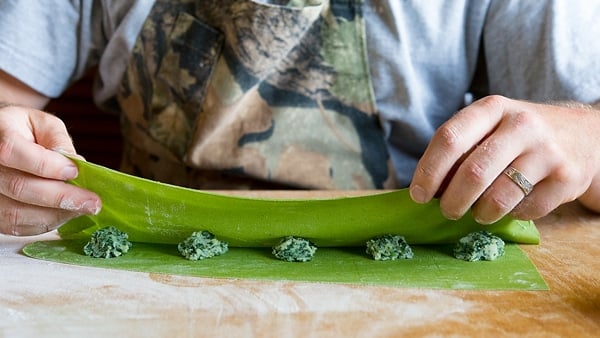
Pasta has long been one of my obsessions. After all, even though this is a wild food website, I have a whole section on pasta recipes here. I make pasta regularly, and have done so for decades.
Why bother? Transforming flour and water into an endless array of shapes and sizes and flavors is a lot like the alchemy of sausage making or winemaking — only it’s a helluva lot easier and cheaper. Homemade pasta is a quiet way to show your love for those you are feeding, or just to show off. Few cooks wouldn’t blush with pride when a guest gushes: “You made this pasta? Wow!” And while pasta making isn’t rocket science, you do need some time and instruction to master it.
Over the years I’ve had lots of help learning this craft, ranging from Italian mothers and grandmothers in my home state of New Jersey to fellow cooks in restaurants, to videos and books. Lots and lots of books.
Especially recently. If you look at cookbook releases in the last few years, you’d think there was no gluten-free movement at all. (Maybe this is a backlash?) Pasta books are hot right now, and I am happy to say that the recent arrivals are some of the absolute best books to come out on the subject in a long, long time. I have read most of the pasta books to come out in English since 1980, and what follows are the books (in order of publication) I think are the most comprehensive and best suited to teaching you how to make pasta at home.
 Pasta by Hand
Pasta by Hand
(Jenn Louis, Chronicle, 2015)
This is the single best book for beginning pasta makers I have ever read, if for no other reason than it does not require a pasta machine. Every other book in this review requires either months of practice rolling rough by hand with a rolling pin, or, more sanely, something like my trusty Atlas pasta maker, which, at $75, is a reasonable price to pay for entry into this craft. But what Chef Louis has done is write a book that absolves you even of this expense. Her recipes require your hands, maybe a fork, a rolling pin — and if you’re fancy, a $6 garganelli and gnocchi board.
Why there hasn’t been a book like this before is mystifying. By focusing on handmade shapes, gnocchi and other Italian dumplings, like the homey, Germanic canaderli of the Italian Alps, Louis, who is a chef in Portland, does two things: She lowers the bar for entry into this craft, and she teaches you skills to make pasta anywhere. Imagine, for a moment, sitting in deer camp and being able to make amazing pasta with nothing more than flour, water and maybe an egg or three.
I did this at the Texas duck hunt and cooking school I held last November, making cavatelli with nothing more than dough and the gnocchi board I linked to above. My students and hosts were astonished that I could do that with basically no equipment. And here’s the secret: those handmade cavatelli are drop-dead easy to make.
So are almost all of Louis’ sauces. Her food is simple, fulfilling and pretty. There are very few esoteric ingredients in this book, and those that appear all have “normal” substitutes: like nettles, for which you can sub in spinach.
This is not a comprehensive pasta book — no spaghetti, ravioli or extruded pasta here — but as a first pasta book there is none better. Buy this book and you will learn to work magic with your hands. Master this, then move on to the machines.
[on_ad]
 Mastering Pasta
Mastering Pasta
(Marc Vetri, Ten Speed 2015)
Marc Vetri is one of America’s best Italian chefs, and the Philly native’s latest book (Full disclosure: Vetri’s co-author, David Joachim, is a friend) is a technique-driven walk through the process of making all kinds of pasta and gnocchi. Even though Vetri’s a chef and many of his recipes are derived from his restaurants, the book is firmly grounded as an instructional guide for the home cook.
Mastering Pasta is a beautiful book, heavily on photos of the actual making of the shapes, which is key. I especially like their decision to show that homemade pasta is by nature a bit erratic: Not every strand of hand-cut tagliatelle will be the same width, and there will be little creases where you’d folded the dough over.
Vetri’s recipes can get esoteric, but not so much for readers of this site. What’s more, like Louis, he’s good about offering alternatives if you can’t find sweetbreads or fresh porcini or snails. This is something I try to do here on Hunter Angler Gardener Cook, and I am glad Vetri and Joachim “get it” — we don’t all have access to pristine ingredients all the time.
My main beef with the book is Vetri’s basic dough. His batch is 395 grams, about 2 1/2 cups of various flours, moistened with 9 egg yolks, plus some water and olive oil. Um, sorry. I am not going to blast a whole carton of eggs for a batch of pasta that will serve 4 or 5 people — and there is no recipe for an all-egg white dough, even though one exists, called “sheets and linens” in Emilia-Romagna. I understand. Vetri runs a restaurant. He’s trying to make a plate of pasta a special thing on a menu in a lovely restaurant. And his dough is indeed wonderful. But it’s just too spendy for a Wednesday night. And, given that you can whip up a basic batch of pasta in an hour, it’s not crazy to think that some cooks might want to make pasta regularly, and not for special occasions.
My advice: Use the Italian standard of 1 whole egg for every 100 grams of flour and you’ll be fine.
Vetri and Joachim also have a whole section on homemade extruded pasta, which I love because I own a torchio, an antique pasta extruder that retails for a few hundred bucks. Unfortunately, they are using an Arcobaleno mechanized extruder, which is an awesome machine… that costs $2000. Now I am about as manic a home pasta maker as anyone, but I couldn’t imagine dropping two grand on a pasta maker. I am assuming this section was written for their fellow restaurant chefs.
That said, I love this book. Vetri’s flavors and originality are remarkable. Hell, he’s even created a new pasta shape called “dove pasta,” which looks a bit like the eagle pattern you see in Southwest Indian weaving. I’ll definitely be making that. His technical sections are my favorite part of the book, and are useful no matter what you put on your pasta. His section on wheat is fascinating. What wheat you use actually matters, and they tell you why.
Mastering Pasta really shines when it comes to filled pasta. All of the books I am reviewing here have good sections on filled pasta, but Vetri shows you shapes you’ve never seen before, combined with flavors you hadn’t thought of.
Bottom line: Buy this book if you’ve made pasta at least a few times before, and want to drill down deeply into the subject. Vetri is a master and it shows, and his recipes, instruction and flavors are top notch.
 Flour + Water
Flour + Water
(Thomas McNaughton, Ten Speed 2014)
This was the first of the three chef-driven pasta books to emerge recently. Flour + Water made a sensation last year, and Chef Thomas McNaughton’s San Francisco restaurant is a destination for pasta lovers. His recipes are modern takes on classics, plus many original creations that look fantastic — and of those I’ve made, certainly are — but like most chef books, are in some ways aspirational. If you live far from a good supermarket or farmer’s market, you’ll have trouble making a lot of his best dishes.
My biggest problem with McNaughton’s pasta is that he is even more extravagant in his “basic” dough than Vetri. McNaughton’s “standard egg dough” calls for a typical 360 grams of flour, which is about 2 packed cups and is the normal batch in pasta books. But unlike the Italians’ recipes in the books below, McNaughton has decided to moisten his flour with 18 to 20 egg yolks. Even his ravioli dough calls for 2 whole eggs and 6 yolks. I’m sorry, but that’s ridiculous. Asking a home cook to spend $8 to $12 just on the eggs for the dough — not even getting to the cost for the sauce or the flour — is just too much. Italians don’t make pasta this way normally. McNaughton’s egg dough is tajarin, a luxurious, special-occasion dough. It’s damn good, and McNaughton’s dough is everything you’d want in a special dough, but no one in her right mind would make this a standard.
The good news is that you don’t need to bother with McNaughton’s doughs to make his recipes. Use the Italian standard of 1 whole egg for every 100 grams of flour I mentioned above and you’ll be fine. Save his doughs for parties. Bottom line: If you live near (or grow) good produce, and you ease back on his $12 dough, this book is absolutely worth your money.
 Sauces & Shapes
Sauces & Shapes
(Oretta Zanini da Vita, W.W. Norton & Co. 2013)
The main criticism of Oretta Zanini da Vita and Maureen Fant’s masterful pasta encyclopedia (see next entry) was its lack of recipes. Sauces & Shapes aims to fix that. Obviously it couldn’t provide recipes for every shape outlined in their first book, or this one would have been 1000 pages. Sauces & Shapes is essentially a “greatest hits” of the encyclopedia aimed specifically at Americans who want to learn how to make pasta at home. This book is an excellent introduction to the craft, with many line drawings illustrating technique and how to form the shapes.
The book also includes enough depth to attract people like me, who have made pasta for years. I’d never known about some of the classic combinations of shape and sauce before, and the origin and context the authors provide for the recipes makes the book richer; it’s not just a long list of recipes and doughs.
Especially interesting to me is Zanini da Vita and Fant’s dedication to including game recipes: Apparently it is as common to make a pasta sauce for hard-to-cook game in Italy as it is to crockpot it with cream of mushroom soup here in America. I’ll take the Italian route any day, and twice on Sunday. (Full disclosure: I helped a bit with their recipes for hare and duck ragu.) There’s also a venison ragu that’s perfect for a rutty old buck or bull elk.
If there is a flaw in this book, it’s that the color photos are all grouped together in plates, not next to their recipes. We eat with our eyes first, and it would have been nice to read a recipe and see how pretty it can look without turning to a central section to search for it. Still, this is an excellent first pasta book.
 Encyclopedia of Pasta
Encyclopedia of Pasta
(Oretta Zanini da Vita, Univ. of California Press 2009)
This book won’t teach you how to make pasta. But it will make you want to master the craft. This 372-page masterpiece, written by the Italian Zanini da Vita and translated by Maureen Fant, deservedly won the James Beard Award when it came out in 2009. It is what it says it is, a dense, fascinating encyclopedia of what seems like every shape of pasta made in Italy. It has long entries on favorites like ravioli and tagliatelle, but also includes oddballs like zavardouni, thick lozenges of wheat flour, corn flour, salt and water.
Poring over this book will give a pasta cook years of inspiration. Use the index to look up an ingredient, even a weird one like nettles or borage. You’ll find a pasta that either uses it in the dough or is sauced with it. No recipes, but the entries generally tell you how to make the dough and what shape it should be. The sauces are just notes, like “a duck ragu.”
This should not be your first pasta book. But if you know how to make pasta and want to expand your skills, you can literally spend years working with The Encyclopedia of Pasta. I have.
 Cooking by Hand
Cooking by Hand
(Paul Bertolli, Clarkson Potter 2003)
Pasta is only one section of this most excellent book — so good it’s one of my desert island books. But what Chef Bertolli teaches in his pasta section was groundbreaking. He goes into intense detail about how different flours act and where you might use them, all with recipes for the alternate flours and sample sauces to go with them, including several with wild game.
Bertolli is also the first writer I read who urges pasta makers to go the extra step of milling their own flour. (Vetri does in his book, too.) Sounds insane, right? It’s not. Freshly milled flour has an aroma and texture wholly unlike anything else: It makes the noodle the star. I first did this with a whole wheat dough moistened with egg whites, and the flavor was transporting. I served it with only butter and cheese. It needed nothing else.
But this book is aimed at someone who already knows the basics of making pasta. It is a bit short on detail and process photos that would help a newbie succeed. My advice is if you know how to make pasta in its basic form, and have made things like spaghetti and tagliatelle and maybe even ravioli, buy this book. You’re ready. If making even tagliatelle scares you, wait a bit before you get this one.
 Bugialli on Pasta
Bugialli on Pasta
(Giuliano Bugialli, Simon & Schuster 1988)
This is the classic. Giuliano Bugialli is one of the foremost experts on Italian cooking, and his books are still goldmines of information even though many date back 20+ years. His pasta book is a 400-page monster that will suck you in for a year or more if you let it. This is the book that all that follow have modeled themselves after. Like Zanini da Vita’s encyclopedia, Bugialli’s book has sections on everything from basic to obscure pastas, gnocchi and other grain-like preparations. Consider this the foundation on which all your other pasta books stand.
Even if the book is a bit dated, it has so much good information you should pick up a copy. What’s more, it’s cheap. You can get copies for $5 online. That’s a steal.
Other Books
Other pasta books, or books with good pasta sections, are also worth mentioning. Some notable ones are Marcella Hazan’s classic, Essentials of Classic Italian Cooking, Domenica Marchetti’s The Glorious Pasta of Italy, and Rosetta Costantino’s My Calabria: Rustic Family Cooking from Italy’s Undiscovered South. Are there other great pasta books out there that I am missing? What are your favorites?
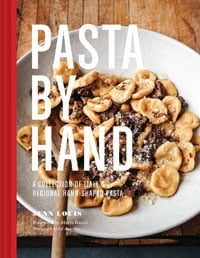
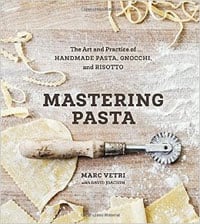
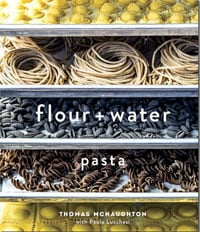
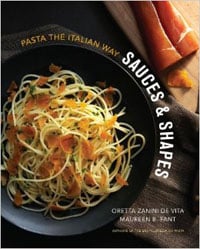
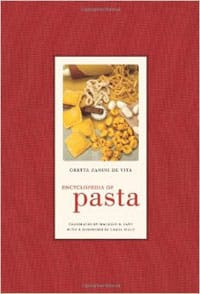
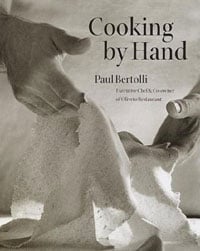
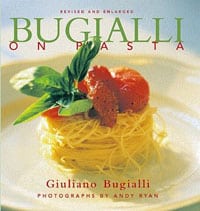
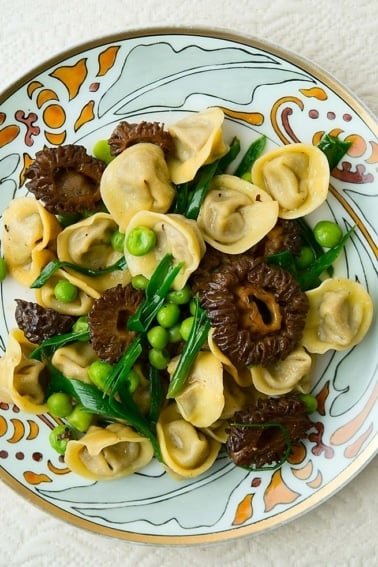
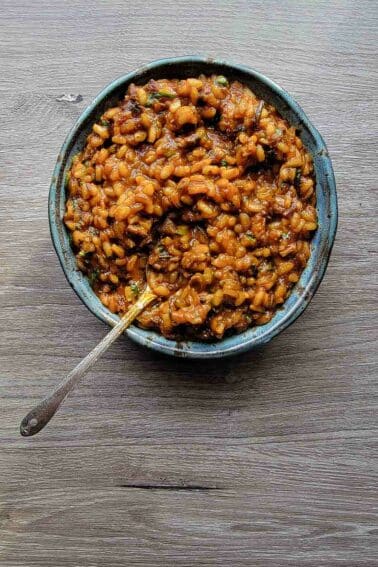
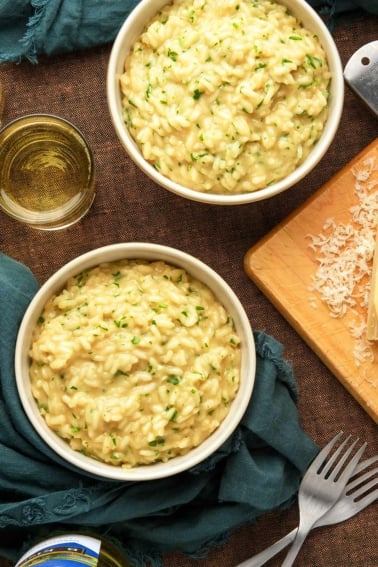
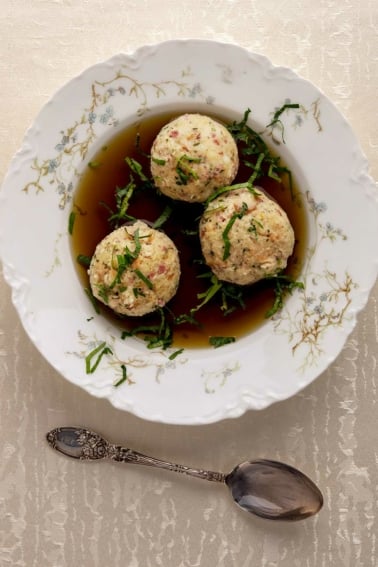
I get it now! There is no set ratio. It is different every time I make it. A little more water here, some extra semolina there…consistency is key.
You aren’t kidding the dough needs to be stiffer than you think! Do you have a standard dough recipe or ratio of semolina to water that you use? I’ve made four separate batches over the last week and still haven’t found a the perfect ratio without either adding more semolina or more water. It’s getting closer though.
I finally have my torchio bench made (after nearly four years of owning a torchio that my parents brought back from Italy… I thought as a gift, but that’s another story) and am ready to jump in. I’ve made plenty of pasta with eggs and flour, but what would you consider to be the best pasta dough recipe to put through the torchio?.
Kevin: Semolina and water. Dough needs to be stiff, stiffer than you think, or it’ll stick to the sides and dies.
Fresh pasta is just such a treat.
Making it at home has been a bit of a challenge for me.
I’ve tried making spaghetti once and beet gnocchi once.
Both were good, but not quite right somehow.
My sexy Italian pasta machine will need to come out of the pantry
this w/end!
Thanks very much for this post. It’s very informative. Two questions:
1 Could you post a recipe for sheets and linens?
2 What do you think of Aliza Green’s “Making Artisan Pasta”? https://www.amazon.com/Making-Artisan-Pasta-Handmade-Dumplings/dp/1592537324/
It’s my one and only pasta book and the one I used to get started. I’ve found all the recipe I’ve tried to be spot on and it has some nice sections on non-italian pasta, but I don’t have anything to compare it to.
Best,
dmg
DMG: I’ll have to check that book out. Thanks for the tip! And I will post the sheets and linens recipe soon.
I have to be gluten free as well. :/ Celiac disease sucks, pasta used to be my favorite thing. You should definitely try it! I think I am going to try adapting some of the recipes myself. It would be so nice to come up with something more edible than the slimy gluten free pasta from the store that falls apart! I’ve had good luck buying the spinach spaghetti, which isn’t too bad, but I would love to be able to make something great that my husband can eat as well.
Thanks for the suggestions!
As someone who can’t have gluten, would I be right in thinking the recipes in Pasta by Hand would be the best suited for experimentation? Anything that requires extensive rolling or stretching is out of bounds for my chemistry skills right now.
Jen: I know nothing about gluten-free pasta making, so I can’t really help you there. Sorry.
E. Nassar: I’ve heard it’s pretty good. I use my torchio.
I’m enjoying Vetri’s book very much (really love all his books) and now I’ll be getting Pasta by Hand as well! Thanks for the rec Hank.
Re extruding pasta I use an inexpensive hand crank machine that works fine with some elbow grease. I add a bit more moisture to Vetri’s dough though. Have you tried the Kitchenaid extrusion attachment? I’m thinking of upgrading to that and Vetri/Joachim recommend it. Thoughts?
Great article!! Im definitely going to order Pasta by Hand now! thanks!
I was lucky enough to get a hands-on class on making Gnocchi by Jenn Louis – PASTA BY HAND. She is a gifted chef!